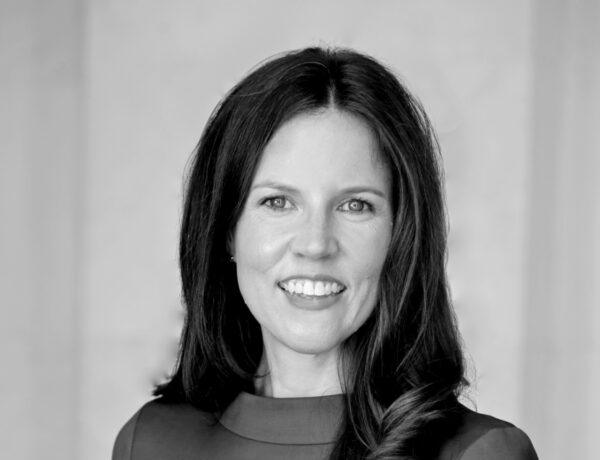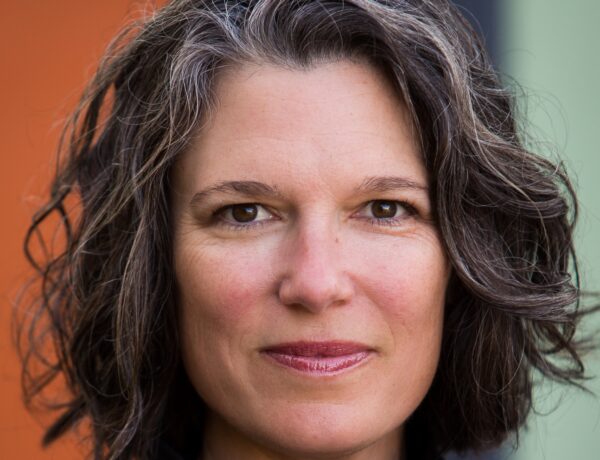Michelle McSweeney is a linguist, professor, author, and GIS specialist at Codecademy. She has two upcoming books, Data with Oxford University Press’s Buzzwords Series and OK with Bloomsbury’s Object Lessons Series.
Michelle’s long-term project, Love Texts, explores how we establish intimacy and trust through writing. She has a passion for exploring the intersection of language, culture, and technology.
Each week, we publish a new daily writing routine from a famous author. Subscribe to our newsletter so you don’t miss out!
Hi Michelle, welcome to Famous Writing Routines, great to have you here with us today! Can you tell us about your background and how you became interested in the study of digital writing in romantic relationships?
Hi! It’s nice to meet you. That’s a rather long story, but the short of it is that I was doing a PhD in Linguistics and was working on how people navigate switching between languages (code switching) in text messaging. It’s a hard problem because keyboards (and therefore autocorrect, etc.) are monolingual – unlike humans.
I got a corpus of about 50,000 text messages from a group of teenagers, and found that about half of them were sent between just two people. It was really incredible – they were dating, and so much of their relationship was happening in writing – something that would have been inconceivable a generation ago.
It wasn’t that they were writing long monologues like you might do in a letter, but they were in a perpetual conversation. It made me realize that all of those beautiful, fragile moments where trust is being built and intimacy is being established are captured and recorded.
Those moments look a little different than they would if they were happening in person, and that shift is reshaping not only how we communicate, but how we connect and trust. I’m working now on a project to crowdsource a lot more messages and allow people to explore their own patterns and ways of communicating. The biggest thing that I’m thinking about now is how easy misunderstanding is when there isn’t a pre-existing relationship. How can I help people mediate that and understand each other better?
Your expertise in linguistics, history, and new media studies is impressive. Can you discuss the significance of your interdisciplinary approach to research and writing?
Thanks. I don’t know if there is any particular significance, but it’s what I personally find most interesting. Some people are really good at pushing the boundaries of knowledge in one area or another, developing a field, and pushing knowledge in a linear way. While I deeply respect that way of working, and depend on it, it’s also not me.
The intersections, overlaps, and gray areas contain so many connections that, if explored, can show how interconnected not only that thing is, but how interconnected we all are. The way I think about everything is that it’s a web of interconnection. Exploring that web and articulating how interconnected humans and culture are is endlessly fascinating to me.
Can you tell us a bit about the research process you went through while writing OK?
When I pitched the idea, I was actually working on ‘lol’ because I was working on text messaging. “Lol” is basically a joke, but it’s universal. It got that way because in a new communication format, there was an immediate need for a new word, and then it spread. It’s OK’s story all over again, but I didn’t know that then.
When I started working on OK, I vaguely knew it had something to do with the newspapers, but when I looked more closely, this whole story about technology emerged. It’s no secret that the account of OK’s history is heavily based on two other accounts of OK (Read and Metcalf). However, the real story is how a new communication technology altered culture and therefore language, and how OK embodies that perfectly.
As far as process, I did a lot of reading and reaching out to everyone who might have some insight into modern American history or literature. Every time I stumbled on an interesting idea or story, I put it on a “sticky note” on my computer to save it. I organized those into the chapters in the book to create the throughline for it.
How has the meaning and usage of “OK” evolved over the years and how have you seen it change in your own lifetime?
OK really began as an acronym for “all correct” – it was a playful respelling, making fun of another city’s way of speaking. It was briefly used as an acronym for “Old Kinderhook”, a nickname for Martin Van Buren during the 1840 presidential election (and adopted by Democrats across the US).
After that, it quickly came to mean a stamp of approval and has had variations of that meaning throughout its lifetime. But OK’s actual meaning is less important today than the subtext that it communicates. OK in the right context means what it has for a century: approval, acceptance, agreement. But OK in the wrong context (or spelled in an interesting way) communicates a lot more.
Because it is so ubiquitous, OK (like some other common words) is a perfect canvas to layer more information onto. It can communicate something about identity (are you the type of person who writes “okay” or the type who writes “okieee”?), or a general tone (in a text message, ‘ok’ is very different from ‘O.K.’). Though the meaning can vary, the biggest recent change is how it has adapted to the modern need to communicate tone and identity in writing.
Can you share a particularly interesting or surprising piece of information you uncovered while writing the book?
OMG yes! Louisa May Alcott most invented “okay” spelled in that way. It was an exciting moment for American literature: the newspapers were printing these serial stories, so the language was changing to fit that, and American literature was coming into its own. Louisa May Alcott signed her book, Little Women.
The publishers were so excited about it that they rushed it to print without a ton of editing. The first version had Amy saying “okay” – written like that. It’s significant because OK was too scandalous to print at that time, and Amy was not the rebellious sister.
Let’s break that down. First, OK was slang, and books didn’t want to be associated with slang. Second, until that point, OK was spelled OK (because that’s actually its original form), and okay was an overcorrection – the kind of thing someone does when they are trying to appear to be from a higher social class than they were born into (this is commonly done in the confusion between “who” and “whom” today). It fits that sister perfectly. But, because publishers really did not want to be associated with such vulgar language, it was edited out in subsequent versions.
But how amazing – it was actually invented as a hyper-correction, in order to communicate something about the personality of one of the characters. That was early in OK’s life, and yet today that is one of the most important functions of OK. There’s much more to this story, but check it out in the book!
Do you struggle to stay focused while writing? You’re not alone! That’s why Famous Writing Routines recommends Freedom – the ultimate app and website blocker for Mac, Windows, Android, iOS, and Chrome. With over 2.5 million users, Freedom helps writers stay on task and avoid distractions. Get started for free today and reclaim your productivity!
Can you tell us about your writing routine? What does a typical day look like for you?
I wrote this book in 2 settings: Between 4am-5:30am and with an infant on my lap. My son was born the week after this contract was signed, and I wrote most of it with him sleeping on me. But, like many authors, I carve time out of the very early morning.
When I’m working on something I wake up at 4am and write until about 6 (or until my now toddler wakes up). There’s something magical about that time, like it’s a secret part of the day that not everyone can know. Whenever it is warm enough, I go outside and write until the birds wake up.
I also write any time I’m on the subway. It’s my favorite place in the world to focus. I live at the beginning of the train line, so I can always get a good corner seat to pull out my laptop. It’s a full uninterrupted hour of writing with no internet and so many distractions that there are no distractions.
If you could have a conversation with any author throughout history about their writing routine and creative process, who would that person be?
Strictly speaking about writing routine, I would talk to some of the authors who keep day jobs and are successful authors on the side, such as Toni Morrison, Franz Kafka, and Agatha Christie. But I would also love to talk to the most prolific children’s book authors such as Dr. Seuss or Sandra Boynton about how they get their inspiration and convey stories with so few words and images.
I’d love to know about the books you’re reading at the moment. What have been some of your favorite recent reads?
Oh my, I have this problem of always reading multiple things. I recently read Pachinko by Min Jin Lee. It’s beautiful, epic, and haunting. There’s one scene that I keep replaying for what it says about truth, secrets, and love. I also recently read The Making of Measure and the Promise of Sameness by Emanuele Luigi, which explores the relationship between measurement and power – I’ll never think about the meter the same way again.
I’m also devouring Wendy Chow’s latest quilting book, dreaming of all the projects I’ll make. But in my bag today, you’d find The Art of Statistics by David Spiegelhalter, which I’m reading to include chapters of in a Data Visualization class I teach. Finally, I stayed up far too late last night finishing Little Fires Everywhere by Celeste Ng, it was just simply very good.
What does your current writing workspace look like?
Sometimes it’s the subway, sometimes it’s the floor next to my son’s toys (where I am right now), and sometimes it’s a tiny desk in front of the biggest window in our house. We live in Brooklyn, so space is limited and the desk serves very many purposes, sometimes it’s a desk, sometimes it’s a dining table, and sometimes it’s where we put our Christmas tree. At the end of the day, I don’t really have the luxury to have a dedicated space or a super consistent time, but weave writing into my life wherever it fits.

Affiliate disclaimer: Some links on this website are affiliate links. We may earn a small commission if you make a purchase through these links, but only promote products we truly believe in. We disclose affiliate links and give honest reviews.



No Comments